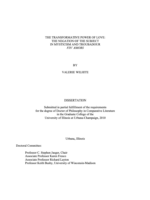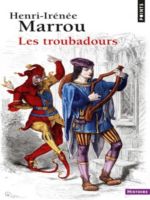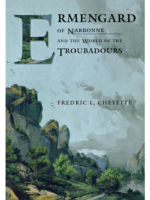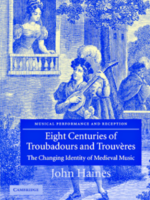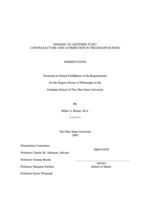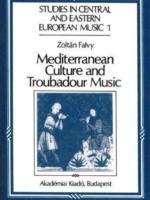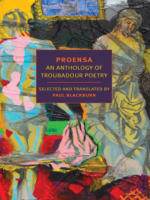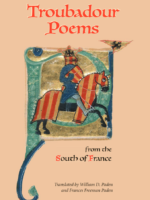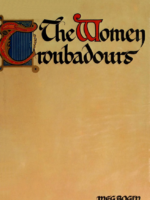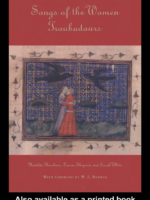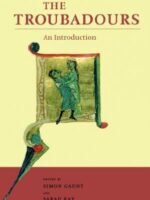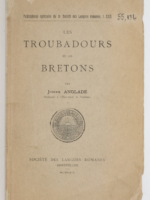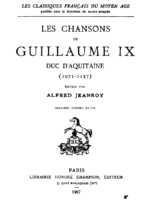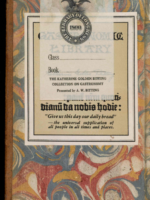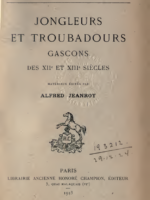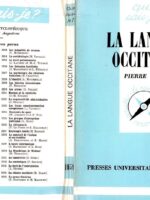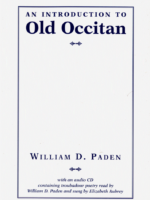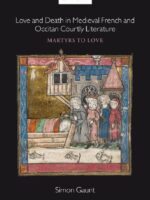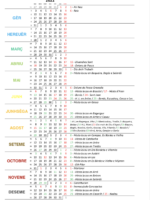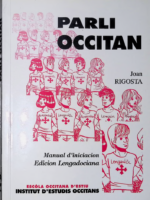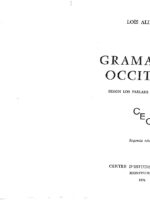Recommended Books
-
Songs of the Women Trouvères
0,00 €We bring together here the songs of all medieval women whose names are recorded in the rubrics or tables of contents of various Old French manuscripts as composers of songs or as participants in jeux-partis and tensons (debate poems). The songs by women whose names are known are relatively few in number, but there were undoubtedly many more women composers, and whereas their names are lost to us, some of their songs are probably still extant, though bereft of proper attribution. Accordingly, we have chosen to include a generous sampling of anonymous works—chansons de femme (women’s songs), rondeaux, and motets—both because they offer a wide variety of female voices and because some of these pieces may well have been composed by women. We hope in this way to rectify a situation that for many years has denied women their rightful place in the pantheon of Old French medieval lyric poets.
For, as surprising as it may seem, the very title of our anthology, Songs of the Women Trouvères, makes a bold, even controversial, statement. Although nearly all scholars now acknowledge the existence of medieval women who composed poetry in other romance languages (Occitan, Spanish, Italian, Galician- Portuguese), most have accepted without question Pierre Bec’s contention that none of the songs composed in northern France in the twelfth or thirteenth centuries are the product of a woman trouvère (Bec 1979: 236). A number of Old French songs feature women’s voices ( féminité textuelle), particularly in the lyric type known as the chanson de femme. However, féminité textuelle does not necessarily imply female authorship (féminité génétique), to use a distinction introduced by Bec himself (1979: 235–36). The majority of these songs are anonymous, but because most of the ones that are attributed in the manuscripts are credited to a male author, Bec has concluded that no Old French songs of the period in question were composed by women. Although many have agreed with Bec, the literary history of the past 125 years includes a few dissenters who base their opinion on evidence that until recently was either ignored or not seriously considered. A brief summary of that history is instructive, as it highlights the major arguments for and against the historical existence of the women trouvères.
-
The transformative power of love
0,00 €This dissertation compares the works of select troubadours with three mystical tracts in order to present the similarities found in these two literary traditions. Mystical writings have a far longer history reaching into antiquity and continuing until the present day. The traces in the manuscript traditions situate in the late eleventh century a new poetic form in Occitan with a focus on earthly love. The love as it is described in the songs of the composers who write or sing about it comes to be called bon amors or fin’ amors, the term we use today to name the love of the troubadour tradition. The period of lyrical production in Occitan by troubadours speaking of fin’ amors does not endure more than three centuries if we begin our count with Guilhem IX (1071-1126) and close with the poet so often called the last of the troubadours, Guiraut Riquier (1254-1292). These two traditions of love literature are thus distinguished by the nature of their literary histories and also by the loves they describe. Despite this, the shape of the loves they discuss as well as the language used to speak about love are not so different.
-
Les Troubadours
0,00 €Il serait temps de nous défaire enfin de ce poncif du troubadour errant, la guitare au côté, égayant de ses ballades les longs loisirs des tristes châteaux gothiques. C’est à cette image conventionnelle et fade que Henri-Irénée Marrou entend substituer la véritable identité et histoire des troubadours, en analysant plus généralement la “renaissance” du XIIe siècle.C’est à cette époque, en pays d’Oc, que les troubadours ont inventé l’amour, le mot comme la chose. C’est l’idéal quasi mystique de l’amour courtois qu’ils célèbrent dans leurs chansons, amour humain bien réel qui se trouve cependant presque élevé à la dignité d’un culte.La première édition de cet ouvrage date de 1961.Henri-Irénéee Marrou (1904-1977) est un des grands historiens de l’Antiquité tardive, spécialiste d’Augustin et de l’augustinisme ; a notamment publié au Seuil, L’Eglise de l’Antiquité tardive (1985) et Saint Augustin et l’augustinisme (2003).
-
Les troubadours. Une histoire poétique
0,00 €Les troubadours sont, au XIIe siècle, les auteurs, immensément admirés, des plus anciennes chansons d’amour composées dans une des langues nouvelles de l’Europe, la langue d’oc. Le tremblement du désir et celui de la crainte, la ferveur et la frustration, la jalousie et la jouissance, tout cela ils l’ont dit de façon si nouvelle et si intense que leurs chansons résonnent encore dans les mots d’amour d’aujourd’hui. Le beau livre de Michel Zink rend sa fraîcheur à cette poésie vieille de neuf siècles en la suivant dans ses méandres, en disant au fil des poèmes, qu’il cite en grand nombre, juste ce qu’il faut pour qu’elle nous parle, pour qu’elle nous enchante et pour qu’elle vive en nous.
-
Ermengard of Narbonne and the World of the Troubadours
0,00 €Ermengard of Narbonne. Even to specialists in the history of the Middle Ages her name is hardly known. Eleanor of Aquitaine, who was wife to two kings and the mother of three more? Yes, there is a name-and a story-to conjure with. Countess Marie of Champagne, Eleanor’s daughter by King Louis VII of France, patron of Chretien de Troyes, the poet who in- vented the Arthurian romance? She too is better known, if only because of the writers who thronged to her court. Ifwe know anything about the Middle Ages we have at least heard of King Richard the Lionheart and his brother King John, who was forced to grant the Magna Carta at Runnymede, both of them sons of Queen Eleanor. We have also surely heard of the mythical King Arthur and his Round Table, of Lancelot and Guinevere, of the quest for the Holy Grail, all of them largely the creation of Chretien. Ermengard, however, has fallen off the historical map.
-
Eight Centuries of Troubadours and Trouveres: The Changing Identity of Medieval Music
0,00 €From the medieval chansonniers to contemporary rap renditions, this book traces the changing interpretation of troubadour and trouv?re music, a repertoire of songs which have successfully maintained public interest for eight centuries. A study of their reception, therefore, serves to illustrate the development of the modern concept of “medieval music”. Important stages in their evolution include sixteenth-century antiquarianism; the Enlightenment synthesis of scholarly and popular traditions; and the infusion of archaeology and philology in the nineteenth century, leading to more recent theories on medieval rhythm.
-
Singing to another tune: contrafacture and attribution in troubadour song
0,00 €“Singing to another tune” is from Las Leys d’amors (The Laws of Love), a poetic treatise compiled by Guilhem Molinier in the first half of the fourteenth century. Guilhem’s phrase pertains to a compositional technique known to modern scholars as contrafacture, in which the troubadour fashions new lyrics after the poetic structure of a preexistent song, thereby allowing his work to be sung to the earlier melody. The technique of contrafacture is documented not only by Guilhem and contemporaneous theorists but also by the troubadours themselves, who on a number of occasions acknowledge composing a poem “el so de,” or “to the tune of” another composer. Both theory and practice demonstrate that structural imitation came to be most closely associated with several specific genres, including the sirventes (moralizing piece), tenso (debate song), coblas (song of few strophes), and planh (lament), their poetic structures commonly modeled after those of the canso, the dominant genre of troubadour composition. Despite abundant structural indications of contrafacture within the troubadour repertoire, melodic traces of the practice are surprisingly scant. Confirmation of melodic borrowing depends upon the preservation of a model and its contrafactum with their concordant musical readings, yet the small proportion of surviving troubadour melodies (with only one in ten lyric texts transmitted with its tune) poses a significant impediment to melodic corroboration. Only three sirventes have been preserved with melodies that duplicate those of preexistent cansos. In the remaining instances in which a sirventes, tenso, or other imitative type is preserved with a melodic unicum, scholars of troubadour song have tended to maintain that, absent melodic corroboration, the tune must be presumed original rather than borrowed. In view of the sparseness of the musical record, however, one should give consideration to an alternate interpretation, namely that the tune preserved exclusively with a given troubadour’s sirventes and thereafter transmitted as his invention may actually have been borrowed from a preexistent canso whose melody is no longer extant in its original setting. Isolating viable structural models for such suspected contrafacta allows the possibility of reascribing potentially borrowed melodies to their original composers. The study of contrafacture can thus lead us to question the received attributions of a number of tunes, thereby posing a challenge to the readily made assumption that the manuscript rubrics consistently pertain to both text and melody. By examining several suspected cases of contrafacture within a web of relevant indices– e.g., generic norms, intertextual correlations, socio-historic context, rhetorical motivation, transmission, and melodic style– we gain greater insight into a compositional technique that indelibly marked the art of the troubadours.
-
Mediterranean culture and troubadour music
0,00 €Mediterranean Culture and Troubadour Music by Zoltan Falvy. The volume gives an account of the origins of troubadour music and the development of European secular music. It focuses on the Spanish cantiga manuscript and the troubadour manuscript group. A significant part of the book deals with the Arab thesis modifying the theory by asserting that Arabic poetry was but one of the mediterranean influences on the troubadours. In an important chapter the author examines with musical orientation the social history of the 13th century period of Alphonse the Wise. A special chapter is de-voted to the clarification of the role of the heretic movements. The stylistical analysis of all the extant melodies of Peire Vidal and Gaucelm Faidit brings out the interesting discovery that troubadour music has archaic features that may be close to European folk music. Zoltan Falvy’s book has a completely new approach to troubadour music demonstrating that court music adapted to court poetry has a structure independent of the poem.
-
Proensa: An Anthology of Troubadour Poetry
0,00 €It was out of medieval Provence – Proensa – that the ethos of courtly love emerged, and it was in the poetry of the Provençal troubadours that it found its perfect expression. Their poetry was also a central inspiration for Dante and his Italian contemporaries, propagators of the modern vernacular lyric, and seven centuries later it was no less important to the modernist Ezra Pound. These poems, a source to which poetry has returned again and again in search of renewal, are subtle, startling, earthy, erotic, and supremely musical.
The poet Paul Blackburn studied and translated the troubadours for twenty years, and the result of that long commitment is ‘Proensa’, an anthology of thirty poets of the eleventh through thirteenth centuries, which has since established itself not only as a powerful and faithful work of translation but as a work of poetry in its own right. Blackburn’s ‘Proensa’, George Economou writes, “will take its place among Gavin Douglas’ ‘Aeneid’, Golding’s ‘Metamorphoses’, the Homer of Chapman, Pope, and Lattimore, Waley’s Japanese, and Pound’s Chinese, Italian, and Old English.”
-
Troubadour Poems from the South of France
0,00 €The poetry of the troubadours was famous throughout the middle ages, but the difficulty and diversity of the original languages have been obstacles to its appreciation by a wider audience. This collection aims to redress the situation, presenting English verse translations in contemporary idiom and a highly readable form. It includes some 125 poems, with a strong representation of those composed by women, and goes beyond traditional limits in time to feature a sampling of the earliest texts in the Occitan language, written in the tenth and eleventh centuries, and later works from the early fourteenth. Though most poems translated in the book were written in Occitan, the vernacular of southern France, there are also a few translations of poems written in the same place and time but in other languages, including Latin, Hebrew, Norse, Catalan, and Italian. Genres include love songs, satires, invectives, pastourelles, debates, laments, and religious songs. A comprehensive introduction places the troubadours in their historical context and traces the development of their art; headnotes introduce each poet, and the book ends with a bibliography and suggestions for further reading.
-
The Women Troubadours
0,00 €This is the first twentieth-century study of the women troubadours who flourished in Southern France between 1150 and 1250 — the great period of troubadour poetry. The book is comprised of a full-length essay on women in the Middle Ages, twenty-three poems by the women troubadours themselves in the original Provencal with translations on facing pages, a capsule biography of each poet, notes, and reading list.
-
Songs of the Women Troubadours
0,00 €An edition and translation of some 30 poems by the trobairditz, a remarkable group of women poets from the 12th and 13th centuries, who composed in the style and language of the troubadours.
-
The Troubadours: An Introduction
0,00 €This book offers a general introduction to the world of the troubadours. Its sixteen chapters, newly commissioned from leading scholars in Britain, the United States, France, Italy and Spain, trace the development of troubadour song (including music), engage with the main trends in troubadour scholarship, and examine the reception of troubadour poetry in manuscripts and in Northern French romance. A series of appendices offer an invaluable guide to more than fifty troubadours, to technical vocabulary, to research tools and to surviving manuscripts.
-
Les troubadours et les Bretons
0,00 €Joseph Anglade siguec professor ena Universitat de Tolosa.
L’idée du présent travail date de plus de vingt-cinq ans..
-
-
-
La langue occitane
0,00 €La langue d’oc ou occitan représente, à coté du catalan, du français, du francoprovencal, du castillan, [.] une des grandes langues romanes ou néo-latines qui se sont développées a partir d’une symbiose entre le latin populaire.
Pierre Bec ei professeur à l’Université de Poitiers, ancien Président de l’Institut d’Etudes Occitanes, ancien Directeur du Centre d’Etudes Supérieures de Civilisation Médiévale.
-
An Introduction to Old Occitan
0,00 €An Introduction to Old Occitan is the only textbook in print for learning the language used by the troubadours in southern France during the Middle Ages. Each of the thirty-two chapters discusses a subject in the study of the language (e.g., stressed vowels, subjunctive mood) and includes an exercise based on a reading of an Occitan text that has been edited afresh for this volume. An essential glossary analyzes every occurrence of every word in the readings and gives cognates in other Romance languages as well as the source of each word in Latin or other languages. The book also contains a list of prefixes, infixes, and suffixes and a dictionary of proper names. An accompanying compact disc includes discussion of the pronunciation of the language, with illustrations from the texts in the book, and musical performances by Elizabeth Aubrey, of the University of Iowa.
-
Love and Death in Medieval French and Occitan Courtly Literature: Martyrs to Love
0,00 €Some of medieval culture’s most arresting images and stories inextricably associate love and death. Thus the troubadour Jaufre Rudel dies in the arms of the countess of Tripoli, having loved her from afar without ever having seen her. Or in Marie de France’s Chevrefoil, Tristan and Iseult’s fatal love is hauntingly symbolized by the fatally entwined honeysuckle and hazel. And who could forget the ethereal spectacle of the Damoisele of Escalot’s body carried to Camelot on a supernatural funerary boat with a letter on her breast explaining how her unrequited love for Lancelot killed her? Medieval literature is fascinated with the idea that love may be a fatal affliction. Indeed, it is frequently suggested that true love requires sacrifice, that you must be ready to die for, from, and in love. Love, in other words, is represented, sometimes explicitly, as a form of martyrdom, a notion that is repeatedly reinforced by courtly literature’s borrowing of religious vocabulary and imagery. The paradigm of the martyr to love has of course remained compelling in the early modern and modern period.
This book seeks to explore what is at stake in medieval literature’s preoccupation with love’s martyrdom. Informed by modern theoretical approaches, particularly Lacanian psychoanalysis and Jacques Derrida’s work on ethics, it offers new readings of a wide range of French and Occitan courtly texts from the twelfth and thirteenth centuries, and argues that a new secular ethics of desire emerges from courtly literature because of its fascination with death. This book also examines the interplay between lyric and romance in courtly literary culture and shows how courtly literature’s predilection for sacrificial desire imposes a repressive sex-gender system that may then be subverted by fictional women and queers who either fail to die on cue, or who die in troublesome and disruptive ways.


